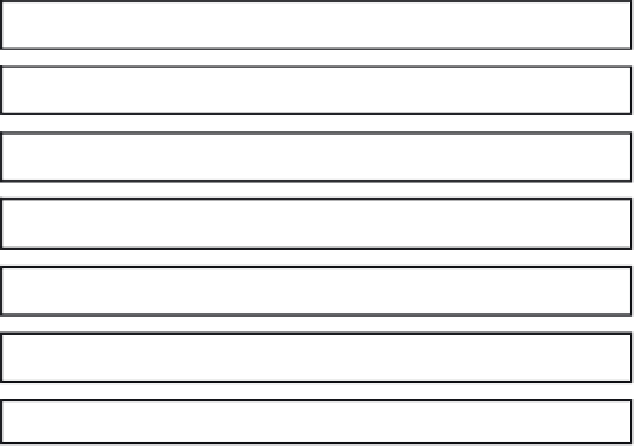Information Technology Reference
In-Depth Information
comes to identification of weights for criteria from a variety of fields. When expert methods
do their job and we have the criteria weights, we may identify their priority in the order of
importance. Although expert methods do not secure very accurate values of quantitative
criteria, the integrated method for calculation of criteria weights considers their qualitative
and quantitative characteristics. Weights may be assessed using the outranking method.
The COPRAS method proceeds with calculations in the following sequence (Fig. 1):
1. Building of the decision matrix
2. Building of the weighted normalised matrix
3. Adding of all matrix values with maximum as optimum for each alternative
4. Adding of all matrix values with minimum as optimum for each alternative
5. Calculation of the minimum S value
6. Calculation of the relative weight of each alternative
7. Calculation of the utility degree of each alternative
Fig. 1. The algorithm of calculations in the COPRAS method
Problem framing is the same as in other multiple criteria evaluation methods; it starts with
building an initial decision-making matrix from
n
alternatives described by
m
indicators,
thus {
fij
},
i
= 1, …,
m
,
j
= 1, …,
n
. The weights of the indicators will be
qi
, i = 1, …,
m
.
Weighted normalized matrix.
Comparison of indicators expressed in different measures
demands for transformation of the indicators into dimensionless (normalised) values. Then
a weighted normalised decision-making matrix is compiled.
This stage aims to obtain
dimensionless (normalised) weighted values from the comparative indicators. When the
dimensionless weighted values are known, all indicators expressed in different measures
may be compared.
The following formula is used for this purpose:
x
q
ij
i
d
,
i m
1,
;
j
1
,
n
,
ij
n
(1)
x
ij
j
1
here
x
ij
is the value of the
criterion
i
in the alternative solution
j
;
m
is the number of criteria;
n
is the number of alternatives;
q
i
is the weight of the criterion
i
. The sum total of
dimensionless weighted values
d
ij
for each criterion
x
i
is always equal to the weight
q
i
of this
criterion:












Search WWH ::

Custom Search